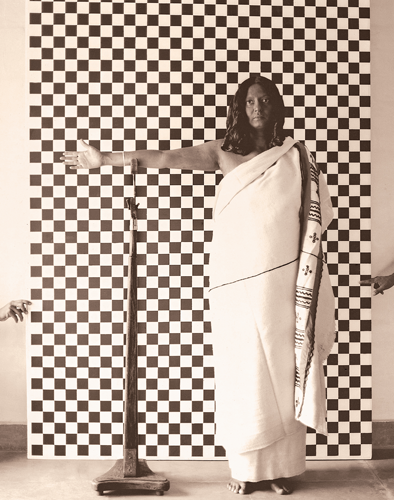
| ||||||||
| Level 300 | ||||||||
| ||||||||
| Level 400 | ||||||||
|
| ||||||||
| History of Art | ||||||||
| LS&A | ||||||||
| University of Michigan | ||||||||
| Back to the list of courses |
Special Topics in the Humanities: Gender and Sexuality in South Asian Art and Visual Culture: 1850s-Present

What comes to mind when one thinks of gender and sexuality in South Asia? Erotic male and female bodies sculpted on temple walls, media images of India and Pakistan as unsafe countries for women, conservative religious and clothing practices, yoga (in its many varieties), and fantastical Bollywood visuals, are all common references. In this course we will revisit these ideas by asking: What does South Asian art and visual culture tell us about gender and sexuality?
We will focus on the nineteenth and twentieth centuries, periods that witnessed European colonialism, a strong anti-colonial movement, and the subsequent formation of independent nations after the end of colonial rule in the subcontinent. Representations of masculinity, femininity, queerness, sexual excess, difference, and obscenity will be explored through case studies in painting, sculpture, popular prints, photography, fashion, film, and Bollywood. We will attend to class-based and racial tensions articulated by artworks. Our engagement with postcolonial theory will allow us to question terms such as 'Modernism' and 'contemporary art' as they apply to South Asian art and visual culture. Our collective work will involve close readings of images, discussion of key works of scholarship, and the application of critical theory to visual material. We will ask ourselves two pressing questions throughout: How do we understand and process difference in the world around us? And how do we reflect on historical constructions of gender and sexuality in order to make the past relevant for us today?
Estimated cost of materials: $0-50.
Textbooks/Other Materials: no textbooks required, readings will be provided as scans
Course Requirements: short reading responses, a mid-term, and a final exam
Intended Audience: Anyone welcome
HISTART Concentration Distributions: C. Asia (Includes China, Japan, India, South and Southeast Asia, and the Pacific), 4. Modern and Contemporary
Image courtesy of Pushpamala N (in collaboration with Clare Arni)